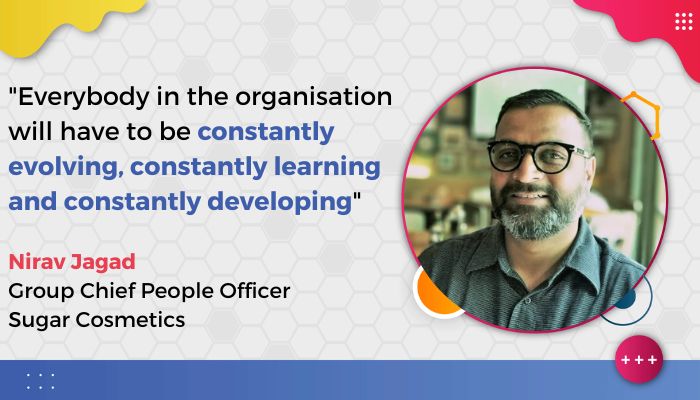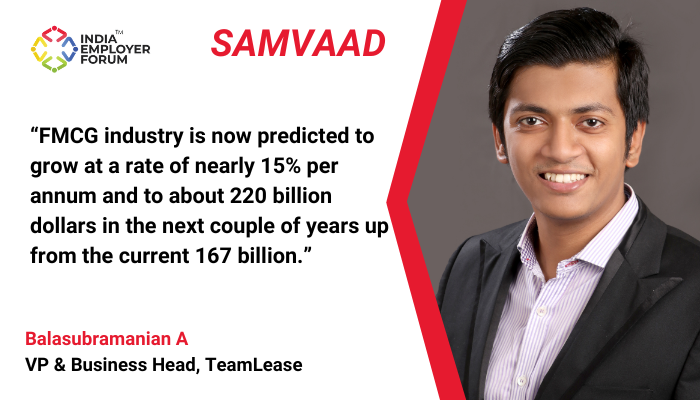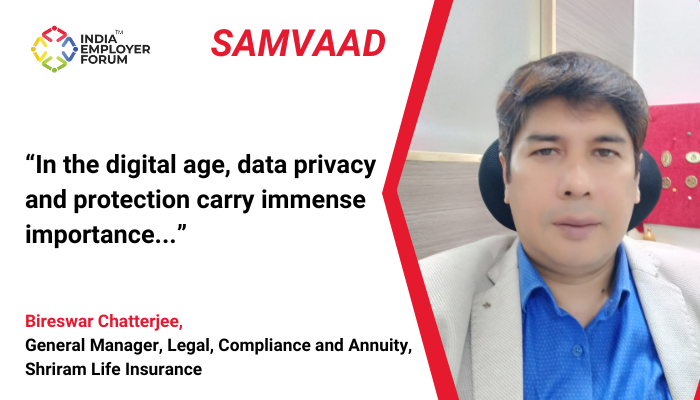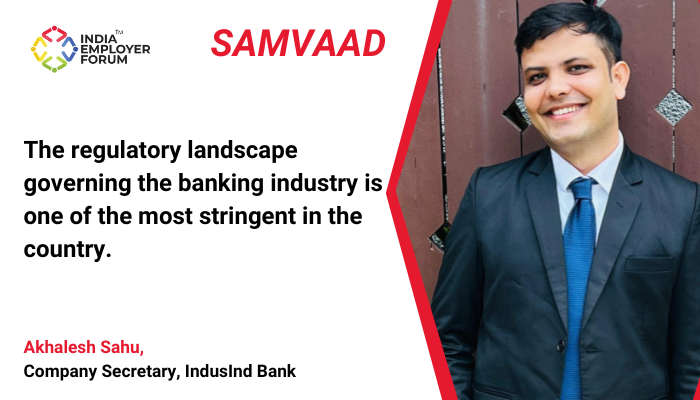Nirav Jagad, Group Chief People Officer, Sugar Cosmetics, speaks to India Employer Forum on the quiet quitting phenomenon, mitigating skill gap, creating a continuous learning culture, reskilling and upskilling, and bringing more women into the workforce and more.
Q. Tell us a little about yourself.
I have about 21 years of experience in the HR space in people’s potential growth and development. In my most recent assignment, I’m the Chief People Officer with Sugar Cosmetics. My career started as an entrepreneur, where I burnt some money and joined a company called EmmayHR. I was there for about 3 years, after which I worked for Cerebrus, where I worked largely on change transformation assignments. Also worked in IL&FS for 5 years as Group Head, Talent and then at Nykaa as Head of HR with the full responsibility of scaling the organisation. I was part of the leadership team that actually was in the midst of that whole growth story of Nykaa.
In my spare time, I love the outdoors. So, I play a lot of outdoor sports and run at every given opportunity. I love catching up on movies whenever time permits and trekking is something that I’ve gained a lot of liking for over a period of time. So, I do a high altitude trekking whenever the opportunity arises.
Q. There is a lot of buzz around quiet quitting. Do you think that it is a phenomenon that was always there and has come to the limelight now, or is this a new concept?
I don’t think that humans have a uni-dimensional aspect to them. We are far more diverse, far more colourful, far more complex than what we have so far understood about humans. So, I don’t think that I would like to wreck myself as a person who will be happy to see people only focused on work. I think if you go out, you bring a lot more to work. That’s the way I see it. Quiet quitting has always been there if you ask me, and these are terms that get coined and it rises up in the social media blitz. But in essence it says that somebody is disengaged and just doing enough to stay afloat. I think that was always there and it’s not a new phenomenon, and it’s not as simplistic as you might read out there.
If you look at quiet quitting and if you look at it from the exit standpoint, and we talk about the great resignation, I see a lot of linkage over there. Probably quiet quitting is the first phase of quitting, before somebody makes up their mind to move out of an organisation. It is also to say that there could be a plethora of people in your organisation, and quiet getting may not necessarily apply to everybody because performance standards differ, capabilities differ and what we might think as quiet quitting is actually somebody making a lot of effort and still managing to deliver.
Q. The skill gap has been a constant pain point for employers. How can businesses mitigate this challenge and ensure a steady pipeline of skilled talent?
I think we are in an environment where this wheel is constantly churning and the environment around this wheel is also evolving. I don’t remember any phase of human history before this where the business landscape was evolving so quickly and it’s only going to gain more and more momentum as you move forward. Now, imagine this is a concentric circle, an organisation is the circle inside, and you see that an individual who’s working in a role has demands on that role made, which in turn, is a demand on that individual to demonstrate a certain skill. Now, that person has an option to either grow vertically or horizontally. It’s a choice that an individual makes but the moment you make that choice, you have no other option but to look at the skill because depending on how you want to grow, there are different sets of skills required.
Back to that, the complexity is that the external forces are going to put on that role to make it relevant to the market. So, you are trying to calibrate your skill capability within the organisation, and then you’re also trying to keep it tuned in to the market now. These are the dual forces, and the way I see it, they are acting on the talent-skill demand. Today, organisations will have to do extremely well to be able to be real time with the kind of skills required from the market and it’s a tough job. Just when you may have frozen upon your skill metrics, there comes something else which pushes the realms of the existing skill metric and demands a new set of skills from you. So, I think continuous learning is possibly the only solution to this. We just have to be in this mindset that everybody in the organisation will have to be constantly evolving, constantly learning and constantly developing.
Q. How important is reskilling and upskilling? How can companies create a continuous learning culture to ensure that employees stay relevant?
This is exactly the question that a lot of us are grappling with today. An organisation’s relevance in the market is basically the sum total of the relevance of all the skills that the employees possess. So, organisations have to see themselves as a representation of its people and if you have aspirations to be the top player in a certain market, you have to be ahead of the competition to figure out what sort of skills are going to be relevant five years hence or three years hence. You should have that vision to figure out what’s the change that’s likely to hit you and prepare for it within your organisation and build that capability ahead of time. A few years back, when the whole computerisation wave hit the world, there were some companies who were better prepared compared to the others.
The next such Black Swan event was COVID, and it demanded serious amounts of frugality to be able to tide over the sudden cash crunch, and organisations that demonstrated frugality as a way of life through the good periods were able to come out unscathed.
When organisations do visioning exercise strategy, skill visioning is also important. What sort of skills are going to be demanded in the future? When you look at upskilling typically, it is always seen as vertical growth of an individual, and reskilling is typically somebody growing horizontally and then trying to build a skill on that side. However, if you look at the growth of individuals in the organisation, it is not always upskilling alone, you normally move zigzag.
Q. Even with increased awareness and advocacy for including more women in the workforce, the participation of women in the labour force has fallen about 10% in the last 15 years. In what ways can policies and initiatives help to bring more women into the workforce?
I think the fact that they hold a c-suite position means that they have done well for themselves. They’re on that spot, nobody’s given them as a benevolence. So, they put in the hard yards, probably more than the men and earn that position for themselves. When you’ve earned a position the confidence is set in. I’m expecting that there could be reasons why they probably are not okay to speak about this subject and there could be multiple reasons. I wouldn’t really want to guess on that, but I can tell you from my experience some of the best leaders that I have worked with have been women leaders. They just have this natural edge, being very perceptive, being very foresighted, being very articulate with deep empathy and strong emotional resilience. I think these are capabilities that are very innate to them. I think Indian industry and Indian business houses will do a disservice to themselves if we do not have more women into leadership positions.
I interact with a lot of my HR colleagues, who are women and I found them exceptionally confident and exceptionally capable. Coming to the problem of why there are fewer women at work; I think it’s extremely alarming that we’re experiencing this trend from 2010 to now. From 26% contribution to the workforce to 19% and to 9% now. I think it’s scary to put it mildly in multiple ways if you look at it from a macroeconomic standpoint. If we can bring back the women and increase the contribution by 50% we’ll have ⅓ of our GDP contributed to them. We are the 5th largest economy in the world today, and we should be really sitting and making note of this. The second point is that today India is going to be starting to age by 2050, and and if we don’t pull in more women into our workforce, we will soon start having an issue about less workforce availability, of an ageing population which is not ideal, given that we should have that advantage for at least another 60-70 years, and that will easily taper out if we don’t add more women.
The third is that I think we just need a balanced workplace and it makes a huge difference. In a discussion room, if you look at a woman and a man, I think they just bring very different perspectives. We talk about diversity and inclusion, and that is what we are talking about, that I get as many diverse people on the table and have them fashioned out in openness and fairness. So, from a macro standpoint this is not just a good thing to do, I think it’s a must for us, for India as an economy.
Watch the full interview: In Conversation with Nirav Jagad | Group Chief People Officer | Sugar Cosmetics
About Nirav Jagad
Nirav Jagad comes with more than 20 years of experience spanning various sectors like Consulting, Infrastructure, Manufacturing and Ecommerce. He counts Randstad, Cerebrus Consultants, IL&FS and Nykaa as his previous experiences. He was a startup advisor in his most recent gig, facilitating scale for early stage startups. In his most noted previous assignment, he was the Chief People Officer at Nykaa. Nirav was part of the leadership team that blitz-scaled Nykaa through the steepest growth phase.




